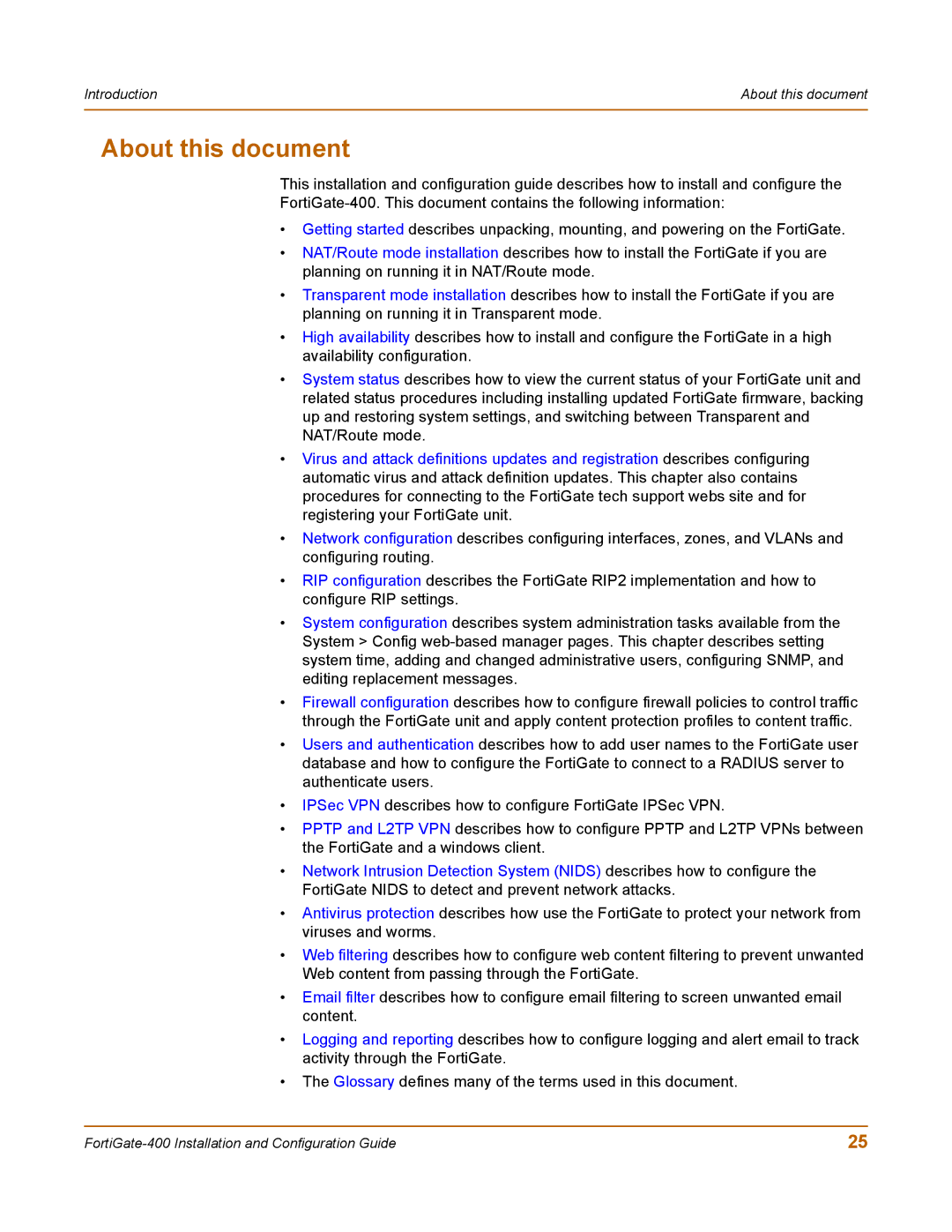Introduction | About this document |
|
|
About this document
This installation and configuration guide describes how to install and configure the
•Getting started describes unpacking, mounting, and powering on the FortiGate.
•NAT/Route mode installation describes how to install the FortiGate if you are planning on running it in NAT/Route mode.
•Transparent mode installation describes how to install the FortiGate if you are planning on running it in Transparent mode.
•High availability describes how to install and configure the FortiGate in a high availability configuration.
•System status describes how to view the current status of your FortiGate unit and related status procedures including installing updated FortiGate firmware, backing up and restoring system settings, and switching between Transparent and NAT/Route mode.
•Virus and attack definitions updates and registration describes configuring automatic virus and attack definition updates. This chapter also contains procedures for connecting to the FortiGate tech support webs site and for registering your FortiGate unit.
•Network configuration describes configuring interfaces, zones, and VLANs and configuring routing.
•RIP configuration describes the FortiGate RIP2 implementation and how to configure RIP settings.
•System configuration describes system administration tasks available from the System > Config
•Firewall configuration describes how to configure firewall policies to control traffic through the FortiGate unit and apply content protection profiles to content traffic.
•Users and authentication describes how to add user names to the FortiGate user database and how to configure the FortiGate to connect to a RADIUS server to authenticate users.
•IPSec VPN describes how to configure FortiGate IPSec VPN.
•PPTP and L2TP VPN describes how to configure PPTP and L2TP VPNs between the FortiGate and a windows client.
•Network Intrusion Detection System (NIDS) describes how to configure the FortiGate NIDS to detect and prevent network attacks.
•Antivirus protection describes how use the FortiGate to protect your network from viruses and worms.
•Web filtering describes how to configure web content filtering to prevent unwanted Web content from passing through the FortiGate.
•Email filter describes how to configure email filtering to screen unwanted email content.
•Logging and reporting describes how to configure logging and alert email to track activity through the FortiGate.
•The Glossary defines many of the terms used in this document.
25 |
